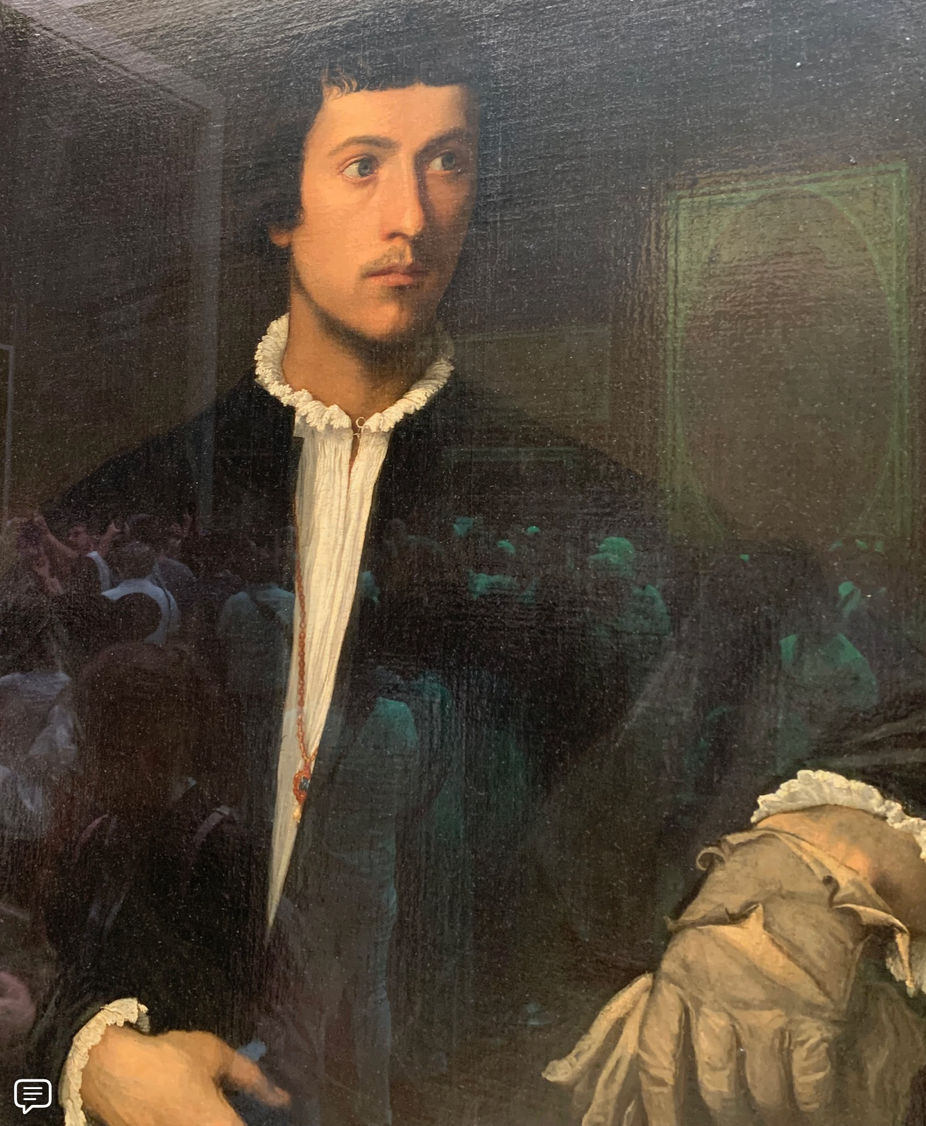

Moved to Tears before "the Man with a Glove"
My Louvre by Antoine Compagnon

Moved to Tears before "the Man with a Glove"
Gide’s way of visiting the Louvre seems wisest. He used to stop in on his way from Auteuil to the Latin Quarter—briefly, but often—to see a painting or revisit a room, one day “the Poussins and the Davids” (l, 239), one day French Sculpture (Houdon, Rude, Carpeaux) (l, 324), one day “the marvelous (tiny) head of Ptolemy, king of Mauretania” (l, 270), a then-recent acquisition unfortunately no longer exhibited (Ma 1888), one day the Fragonards in the Salle La Caze (l, 499), including the surprising Portrait of the Abbé de Saint-Non, painted “in an hour’s time” (Sully, room 929). And so it happened that one afternoon in 1893 the painting that caught his eye was neither a Rembrandt nor a Leonardo but Titian’s Man with a Glove, “which moved me to tears,” as he wrote (l, 169). What Gide sought in these paintings was “the smidgen of life that remains” in them after they have been taken to the museum. Titian’s portrait struck him for the “intensity of life it contains,” the intensity that “constitutes the value of a thing,” whether that life “is the life of the artist or the life of the subject,” he adds. For the spark to catch, for the painting to move someone to tears after several centuries, it seems to me that intensity must have presided over the encounter of the life of the model and that of the artist (Denon, room 711).